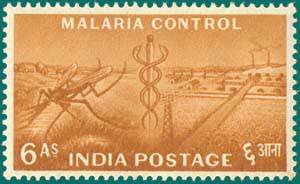
Sir Ronald Ross was a British medical doctor who made groundbreaking contributions to the field of medicine, particularly in the area of malaria research. He was awarded the Nobel Prize in Physiology/Medicine in 1902 for his work on malaria disease and knighted in 1911 for his contributions to medicine.
Here are some key details about his life and work:
Ross was born on May 13, 1857, in Almora, India. His father was a general in the British Indian Army.
Ross was sent to England at the age of eight for schooling. While he developed a passion for poetry, music, literature and mathematics from his early childhood, and wanted to become a writer, his father enrolled him at St. Bartholomew’s Hospital Medical College in London for studying medicine.
On appointment as a surgeon in the Indian Medical Service in 1881, he was variously posted in Madras, Burma (now Myanmar), Baluchistan, Andaman Islands, Bangalore and Secunderabad.
Ross met Sir Patrick Manson, who became his mentor, for the first time in 1894. Manson, a Scottish physician who specialised in parasitology and tropical medicine, introduced him to the real problems in malaria research. At that time, malaria was known as the “King of Diseases” due to its high mortality rate of one million people per year in India alone.
Research Methodology
Ross used a combination of microscopy, experimentation and observation to study the life cycle of the malaria parasite. He worked in Secunderabad, India, and later in Calcutta (now Kolkata), where he conducted extensive research on malaria transmission.
On August 20, 1897, Ross made a groundbreaking discovery. He found malaria parasites in the stomach of an Anopheles mosquito that had fed on a malaria-infected patient. This discovery was a crucial step in understanding the life cycle of the malaria parasite and its transmission to humans.
Here are some instances that highlight the dedication of Ronald Ross to his goal:
- The Begumpet Quarantine Station provided Ross with access to malaria-infected patients and a suitable environment for conducting his research. The hospital’s location in Secunderabad, with its high incidence of malaria, allowed Ross to collect data and conduct experiments that contributed significantly to his discovery.
- Ross conducted extensive research on mosquitoes, observing their breeding habits and linking them to the spread of malaria. He noticed that his bungalow in Bangalore had more mosquitoes than others due to a water tub outside his window where they bred.
- During a visit to Sigur Ghat near Ooty, Tamil Nadu, Ross observed a mosquito with an unusual stance, which he termed the “dapple-winged” mosquito. This mosquito later played a crucial role in his research.
- Ross paid a malaria patient named Husein Khan 10 annas to be bitten by mosquitoes for his research. This experiment ultimately led to a breakthrough in understanding malaria transmission.
Ross discovered that mosquitoes were the primary vectors of malaria transmission. He identified the Anopheles mosquito as the specific genus responsible for transmitting the parasite. Ross detailed the life cycle of the malaria parasite, including its development within the mosquito and its transmission to humans through mosquito bites. He discovered oocysts, the parasitic stages that develop in the mosquito’s stomach, which are crucial for the parasite’s life cycle.
Ross’s discoveries revolutionised the understanding of malaria transmission and paved the way for effective prevention and control strategies. Some key applications of his work include:
- Mosquito control measures: Ross’s findings led to the implementation of mosquito control measures, such as draining standing water, using insecticides, and introducing mosquito nets.
- Malaria prevention: His work informed the development of malaria prevention strategies, including the use of quinine and other anti-malarial drugs.
- Global health impact: Ross’s research has had a profound impact on global health, enabling the control and prevention of malaria in many parts of the world.
Ross’s contributions to medicine were widely recognised. He was awarded the Nobel Prize in Physiology/Medicine in 1902 and was knighted in 1911 for his services to medicine.
Ronald Ross’s achievements extended far beyond his groundbreaking work on malaria:
- Back in England after resigning from Indian Medical Service in 1899, he played a crucial role in establishing the Liverpool School of Tropical Medicine, the first institution of its kind dedicated to studying tropical diseases.
- He served as the professor of tropical medicine and later became the director of the Ross Institute and Hospital for Tropical Diseases.
- Ross applied mathematical techniques to understand disease transmission dynamics. His work in this area paved the way for future researchers to develop more sophisticated models.
- Ross was a prolific writer, poet, and composer, besides being an amateur artist and mathematician. He wrote several novels, poems and songs, showcasing his creative side. He habitually wrote poems on significant events in his life, gaining wide acclaim for his poetic works.
Upon discovering the malaria parasite’s life cycle in mosquitoes, Ross composed a poem reflecting on his achievement. The poem includes the lines:
This day relenting God
Hath placed within my hand
A wondrous thing; and God
Be praised. At His command,
Seeking His secret deeds
With tears and toiling breath,
I find thy cunning seeds,
O million-murdering Death.
I know this little thing
A myriad men will save.
O Death, where is thy sting?
Thy victory, O Grave?
Ross’s work has had a lasting impact on our understanding of malaria and its transmission. His discoveries have led to significant advances in preventing and controlling malaria, saving countless lives worldwide.
Image above: In 1997, the Indian postal service issued a postage stamp commemorating the centenary of Sir Ronald Ross’s discovery of the malaria parasite’s transmission by mosquitoes.

A postage stamp commemorating India’s National Malaria Control Programme was issued in 1955, and is related to the Five Year Plan. The highly successful programme launched in 1953 evolved into the National Malaria Eradication Programme in 1958. Image courtesy Wikipedia.
Visit Malaria Philatelists International for details of the United Nations ‘World United Against Malaria’ stamps campaign launched in 1962, with participation by as many as 80 countries.
